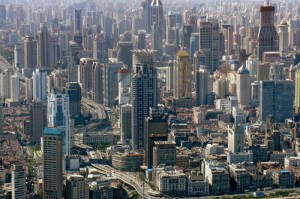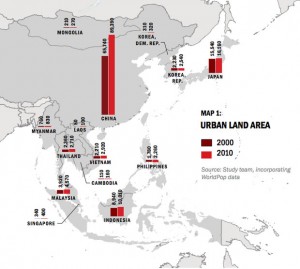To Grow or Not to Grow: The Wild Card of Aging Populations
Feb 3rd, 2015 | By admin | Category: Economics and GDPChina’s population growth has been popping up in the news recently. It seems the government’s concern about too much population growth has now swung in the other direction – today the issue is a shrinking labor pool.
The Chinese labor force has already peaked and its population will shrink after 2030, though some experts think it will do just fine.Don’t Grow, No Wait, Grow!
If the world’s most populous country – famous (or rather, infamous) for enforcing a one-child per family policy – is now worried that it is not growing enough, what should the rest of the world think?
It could mean that Chinese bureaucrats missed this report by the World Bank East Asia’s Changing Urban Landscape: Measuring a Decade of Spatial Growth. While not directly related, it focuses on how the “shift from rural to urban societies is having a massive impact on the economic, social, political, and environmental landscape of countries across the globe.” For now, the Chinese countryside is still practically moving en masse to cities, at government urging (please see the New York Times article “China’s Great Uprooting: Moving 250 Million Into Cities”).
They are moving to cities for jobs, hence the government’s concern, which has partially lifted its ban on one child families.
The Atlantic put this information in five infographics which reflect the change from rural to urban. Here is one on them:
The Jury is Still Out
Yet this is a relatively new phenomenon, this aging of the human population. There will be major economic and social implications from aging, but we really don’t know how it’s going to play out in the long run. The Los Angeles Times editorial board opined last month that, “among other things, policymakers must address the practical questions of how a smaller working-age population would support a larger elderly population. This is a short-term concern, though. Yes, lower birth rates would mean some years of struggle, but once the younger population aged, there would be a smaller group of the elderly to be supported in the future.”
There is already high unemployment and underemployment rates. Technology bumps up efficiency and productivity. And then there is the growth in robots, which will continue to displace workers.
Economic growth depends upon population growth, and growth in consumption. The planet likely can’t handle much more of either. We are facing a moment when it’s time to redefine economic growth on a finite Earth. Just do a quick Google search on alternative economies and see the amount of work being done to create a different system that doesn’t suck the planet dry.
Alan Weisman, author of Countdown: Our Last, Best Hope for a Future on Earth, talked about population aging in an interview in Orion Magazine. Weisman said:
Yes, some countries have shrinking populations. But they’re not looking at a situation that goes on into perpetuity, in which they have far more older people than younger people. They’re looking at a generation or so of a bubble where they’re going to have more older people, and then, as that generation dies off, the number of older people and younger people are going to balance out again, and it’s not going to be a problem.
How do they economically get through those bubble years? As an American, I can think of an awful lot of things that my government is spending money on right now that if it dedicated those monies to taking care of a generation of older people until our population evened out, we’d be a much better society.
A New Narrative
So much boils down to choice, empowerment and political will. We know what to do, and can start doing it today, from reinventing our economic structures to investing in voluntary family planning to reducing consumption.
China has drank the free market system Kool Aid and is now fretting about not enough people because that’s what a market system needs to grow. That’s the modern world’s mantra – growth, growth, growth, and don’t think of the consequences.
What China and most every other country needs to do, save Bhutan, perhaps, is consider alternatives such as a steady state economy and redefining growth. We can change the growth narrative without the sky falling.
Suzanne York is a senior writer with the Institute for Population Studies.



Great work! Landed on the Wall of Fame today at Growth Bias Busted http://www.growthbiasbusted.org/wall-of-fame/entry/don-t-grow-no-wait-grow